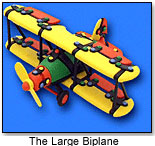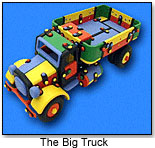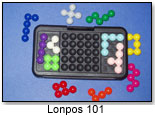| "Don´t think grandiosely; spend what you can afford to spend. Don´t owe a penny to anybody. Ask experts and listen to the answers." —Tony Cross, president of Mic-o-Mic |
Mic-O-Mic (ToyShow) designer Klaus Micklitz created and patented a sleek new take on the traditional construction and model toy. The high-quality toys stimulate both brain and fine-motor-skills development, while encouraging an active imagination.
 First made more than 20 years ago, Mic-O-Mic has until recently only been available on airplanes and in duty-free shops across Europe. However, last year Mic-O-Mic finally introduced its line of constructible model toy cars, planes, helicopters and trucks to America. The response has been fantastic.
First made more than 20 years ago, Mic-O-Mic has until recently only been available on airplanes and in duty-free shops across Europe. However, last year Mic-O-Mic finally introduced its line of constructible model toy cars, planes, helicopters and trucks to America. The response has been fantastic.
"It´s one of those products that needs to be seen and handled. Once you do, you fall in love with it," says Tony Cross, Mic-O-Mic president and self-proclaimed “everything in-between.” "I´d like to say we´ve sold 300,000, but we´ve just introduced it to North America and people don´t know about it yet." 
So how does a small business expand into a new and much larger market? Cross, a retired insurance broker for Lloyd´s of London, took over Mic-O-Mic in December of 2003 and facilitated the company’s American debut only five months later.
"I started with no money," he says. He advises: "don´t think grandiosely; spend what you can afford to spend. Don´t owe a penny to anybody. Ask experts and listen to the answers.”
Cross approached Mic-O-Mic’s expansion with this philosophy and a practical strategy. First, he surveyed the challenges. Mic-O-Mic toys’ fine German "museum quality" craftsmanship is expensive. The toys also do not fit in the usual high-tech children´s entertainment mold: they are best sold in person, not over the Web. To top it off, the small company had little liquid capital for marketing. So Cross took his own advice and started small.
 "The first thing was to get some toy awards." He did. Mic-O-Mic toys have taken home 18 national awards from more than eight organizations in the company’s first year alone.
"The first thing was to get some toy awards." He did. Mic-O-Mic toys have taken home 18 national awards from more than eight organizations in the company’s first year alone.
Next, Cross attended trade shows, strategically placed advertising and marketed directly to high-end retail stores across the country. So far, Mic-O-Mic toys can be found in more than 30 retail stores and chains, including FAO Schwarz and the gift store at the Museum of Fine Arts in Boston. Not bad for a first year. 
What’s the next step? Something entirely new. In July, Mic-O-Mic will introduce Lonpos 101, a puzzle holding more than 360,000 puzzles in one pocket-sized game. In the past two years, more than two million Lonpos 101s have been sold by a competing distributor in Europe and the Far East — at over $40 a piece. Cross plans to sell the game in the United States at just $16.99 because, as he says, “It’s affordable and we’ll still make a profit. It’s a fair price. Everybody wins.” And winning’s the name of the game.

